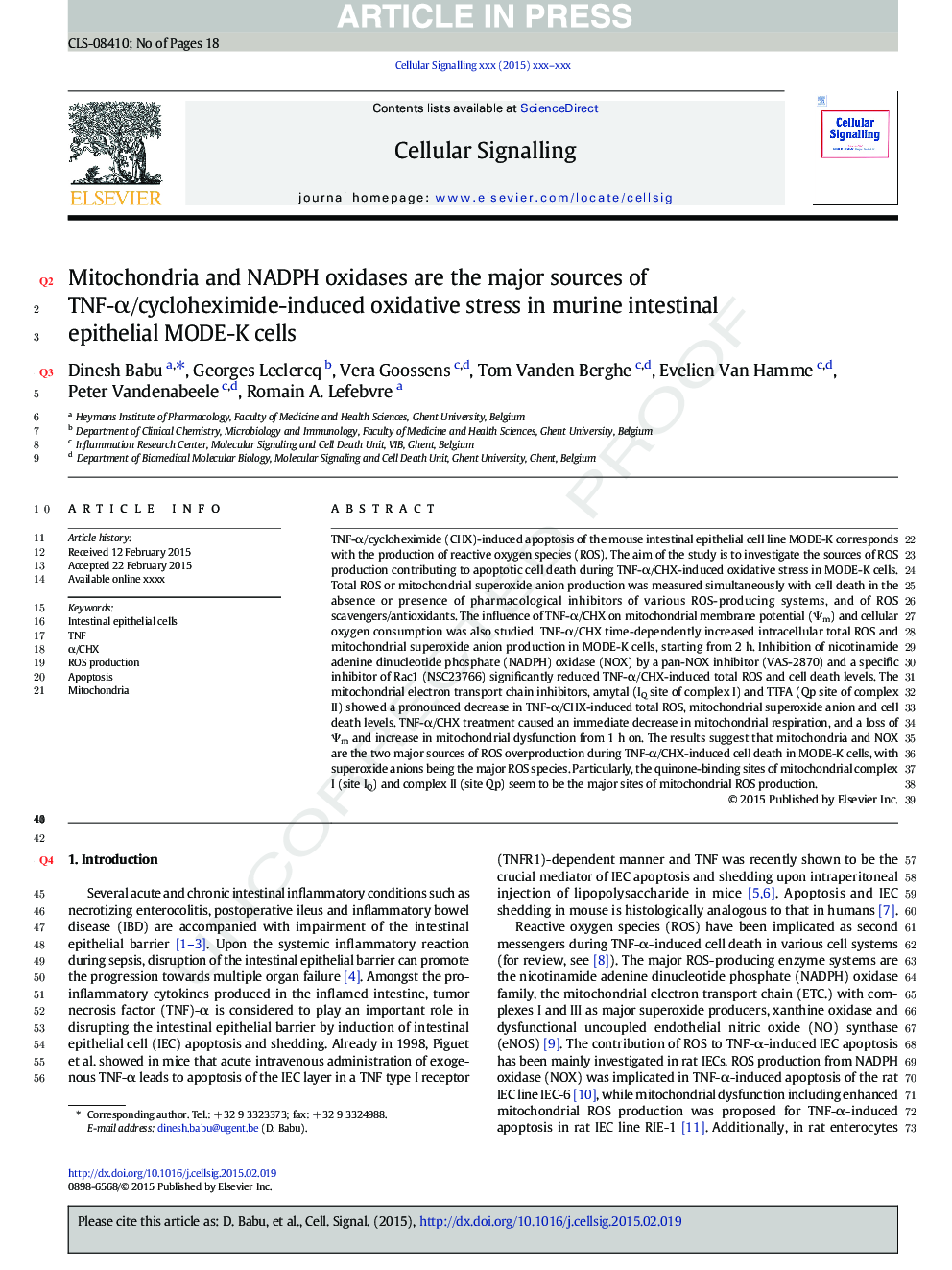| کد مقاله | کد نشریه | سال انتشار | مقاله انگلیسی | نسخه تمام متن |
|---|---|---|---|---|
| 10815054 | 1058444 | 2015 | 18 صفحه PDF | دانلود رایگان |
عنوان انگلیسی مقاله ISI
Mitochondria and NADPH oxidases are the major sources of TNF-α/cycloheximide-induced oxidative stress in murine intestinal epithelial MODE-K cells
دانلود مقاله + سفارش ترجمه
دانلود مقاله ISI انگلیسی
رایگان برای ایرانیان
کلمات کلیدی
موضوعات مرتبط
علوم زیستی و بیوفناوری
بیوشیمی، ژنتیک و زیست شناسی مولکولی
زیست شیمی
پیش نمایش صفحه اول مقاله

چکیده انگلیسی
TNF-α/cycloheximide (CHX)-induced apoptosis of the mouse intestinal epithelial cell line MODE-K corresponds with the production of reactive oxygen species (ROS). The aim of the study is to investigate the sources of ROS production contributing to apoptotic cell death during TNF-α/CHX-induced oxidative stress in MODE-K cells. Total ROS or mitochondrial superoxide anion production was measured simultaneously with cell death in the absence or presence of pharmacological inhibitors of various ROS-producing systems, and of ROS scavengers/antioxidants. The influence of TNF-α/CHX on mitochondrial membrane potential (Ψm) and cellular oxygen consumption was also studied. TNF-α/CHX time-dependently increased intracellular total ROS and mitochondrial superoxide anion production in MODE-K cells, starting from 2 h. Inhibition of nicotinamide adenine dinucleotide phosphate (NADPH) oxidase (NOX) by a pan-NOX inhibitor (VAS-2870) and a specific inhibitor of Rac1 (NSC23766) significantly reduced TNF-α/CHX-induced total ROS and cell death levels. The mitochondrial electron transport chain inhibitors, amytal (IQ site of complex I) and TTFA (Qp site of complex II) showed a pronounced decrease in TNF-α/CHX-induced total ROS, mitochondrial superoxide anion and cell death levels. TNF-α/CHX treatment caused an immediate decrease in mitochondrial respiration, and a loss of Ψm and increase in mitochondrial dysfunction from 1 h on. The results suggest that mitochondria and NOX are the two major sources of ROS overproduction during TNF-α/CHX-induced cell death in MODE-K cells, with superoxide anions being the major ROS species. Particularly, the quinone-binding sites of mitochondrial complex I (site IQ) and complex II (site Qp) seem to be the major sites of mitochondrial ROS production.
ناشر
Database: Elsevier - ScienceDirect (ساینس دایرکت)
Journal: Cellular Signalling - Volume 27, Issue 6, June 2015, Pages 1141-1158
Journal: Cellular Signalling - Volume 27, Issue 6, June 2015, Pages 1141-1158
نویسندگان
Dinesh Babu, Georges Leclercq, Vera Goossens, Tom Vanden Berghe, Evelien Van Hamme, Peter Vandenabeele, Romain A. Lefebvre,